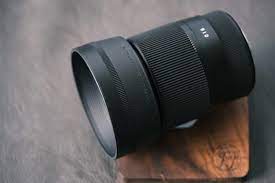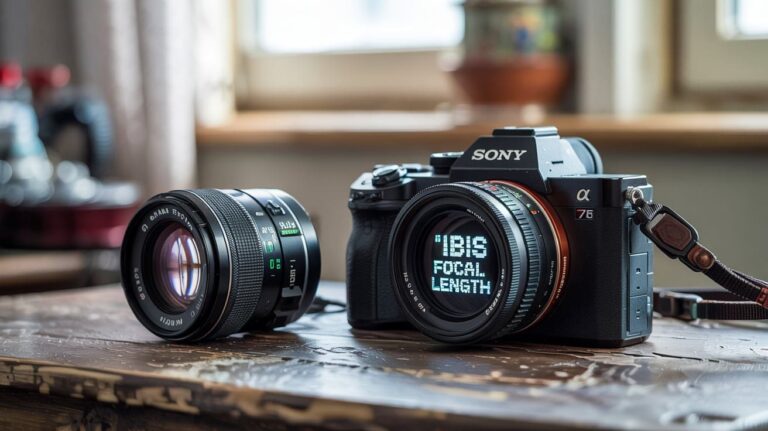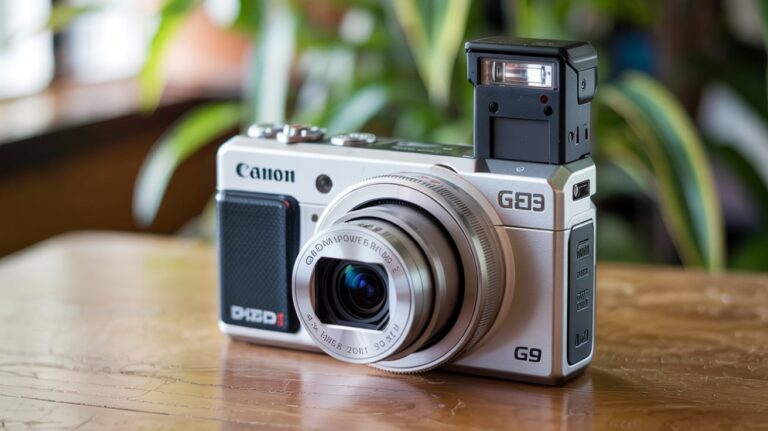Ultrawide Lens Everything Is in Focus – Easy Guide for Sharp Photos!
When using an ultrawide lens, many people notice that everything in the photo looks sharp, from the front to the back. This happens because these lenses give you a wide view and a deep focus. In this guide, you’ll learn why ultrawide lenses keep everything in focus, the best camera settings to use, and how to get clear, detailed shots every time.
Ultrawide Lens Everything Is in Focus: What It Really Means
When people say “ultrawide lens, everything is in focus,” they mean that photos taken with an ultrawide lens usually show sharp details from the front of the image all the way to the background. This happens because ultrawide lenses have a large depth of field, which naturally keeps more of the scene clear and focused, perfect for landscapes, city shots, or tight indoor spaces.
You don’t need to blur the background to make your subject pop, instead, the whole scene tells the story. It’s a great choice for capturing everything in one clean, focused shot.
Best Camera Settings to Keep Everything in Focus with an Ultrawide Lens
Using the right settings can make a big difference when trying to keep your entire scene sharp. Here’s how to do it:

1. Use a Smaller Aperture (f/8 to f/16)
To get a deep depth of field, choose a smaller aperture like f/8, f/11, or f/16. This allows your camera to keep both the foreground and background in focus. It’s one of the most important settings for ultrawide lenses.
2. Set a Low ISO (100–200)
Keeping your ISO low (ISO 100 or 200) helps reduce grain or noise in your photo. A clean, noise-free image is essential, especially when everything in the frame is visible.
3. Adjust Shutter Speed Accordingly
A smaller aperture lets in less light, so you’ll need to slow down the shutter speed to maintain proper exposure. If you’re shooting handheld, try to keep the speed fast enough to avoid blur. For slower speeds, use a tripod.
4. Focus One-Third Into the Scene
This technique, known as hyperfocal focusing, helps extend the sharp focus from front to back. Don’t focus right at the front or back, aim for about a third of the way into your frame.
5. Use Manual Focus for Better Control
Autofocus can struggle with ultrawide scenes. Switch to manual focus for more accuracy, especially when shooting landscapes or interiors where you want total control.
6. Use a Tripod for Stability
When using small apertures and slow shutter speeds, a tripod becomes essential. It keeps your camera steady, preventing blur and ensuring maximum sharpness across the whole image.
Tips for Beginners – Ultrawide Lens Everything Is in Focus!
Using an ultrawide lens for the first time? Don’t worry, getting everything in focus is easier than you might think. Here are some helpful tips just for beginners:
1. Start with a Small Aperture
To keep everything sharp, set your aperture to f/8 or smaller. This increases the depth of field and helps the entire scene stay in focus. It’s perfect for outdoor and wide shots.
2. Keep Your Hands Steady or Use a Tripod
Because smaller apertures let in less light, your shutter speed might slow down. Use a tripod or hold your camera steady to avoid blurry shots.
3. Focus a Little Beyond the Foreground
Don’t focus right on the closest object. Instead, focus about one-third into your scene. This trick helps keep both the front and background clear.
4. Use Live View or Manual Focus
Ultrawide lenses sometimes confuse autofocus. Use Live View or manual focus to check sharpness across the frame before pressing the shutter.
5. Practice with Landscapes or Architecture
These are great subjects for learning. Try taking photos of streets, wide buildings, or mountain views, you’ll see how much detail your lens can capture in one shot.
6. Watch Your Edges
Ultrawide lenses can stretch and distort edges. Be careful with how you frame people or straight lines near the corners of your image.
7. Get Close to Your Subject
One cool thing about ultrawide lenses is that you can get very close to your subject and still include a wide background. This helps your viewer feel like they’re right there in the scene.
Creative Ways to Use an Ultrawide Lens for Sharp Focus Across the Frame
How to Use an Ultrawide Lens to Keep Everything Sharp
- Choose a small aperture (f/8 to f/16) to increase depth of field and keep more of the scene in focus.
- Set a low ISO (100-200) for clean, noise-free images.
- Focus about one-third into the frame (hyperfocal distance) to maximize sharpness from foreground to background.
- Use manual focus when autofocus struggles with wide scenes.
- Use a tripod to avoid camera shake, especially with slower shutter speeds.
- Avoid wide-open apertures (like f/1.8) that reduce depth of field and blur parts of the image.
- Check sharpness using Live View on your camera’s screen before taking the shot.
- Keep the lens clean to ensure maximum clarity.
- Frame your shot carefully to minimize distortion near the edges.
- Practice shooting landscapes or interiors to get used to the lens’s sharpness capabilities.
Ultrawide Lens Depth Techniques: How to Make Sure Everything Is in Focus!
Using an ultrawide lens naturally gives you a larger depth of field, which means more of your photo stays sharp from front to back. To make sure everything is in focus, one key technique is to use a small aperture like f/8 or smaller. This limits the amount of light entering the lens but greatly increases the range of sharp focus in your image.

Another important depth technique is focusing at the hyperfocal distance, roughly one-third into your scene. This method maximizes the area in focus, keeping both the nearest objects and the farthest background sharp. Combining these settings helps you take full advantage of your ultrawide lens’s ability to capture detailed, sharp photos throughout the entire frame.
Common Mistakes When Using an Ultrawide Lens to Keep Everything Sharp
- Using a wide aperture (like f/2.8): A wide aperture lets in more light but creates a shallow depth of field. This makes some parts of your photo blurry instead of sharp.
- Not using a small aperture (like f/8 or f/11): Small apertures help keep everything from front to back in focus. It’s an easy way to improve overall sharpness in your image.
- Focusing too close or too far: If you focus on the wrong spot, your background or foreground might turn out soft. A good trick is to focus about one-third into the scene.
- Skipping the tripod: Ultrawide lenses often need slower shutter speeds when using small apertures. Without a tripod, even a little camera shake can blur the whole image.
- Ignoring edge distortion: Objects near the corners can look stretched or soft if not placed carefully. Always check your frame to avoid odd shapes or blurriness at the edges.
- Trusting autofocus too much: Autofocus doesn’t always work well with wide scenes. Manual focus gives you better control to keep everything sharp, especially in tricky lighting.
- Not reviewing the image: After taking the shot, some people don’t zoom in to check focus. Always review your image to make sure everything looks clear from edge to edge.
Ultrawide Lens Everything Is in Focus vs. Shallow Focus: What’s Better?
| Feature / Aspect | Ultrawide Lens – Everything in Focus | Shallow Focus (Blurred Background) |
| Focus Style | Sharp from foreground to background | Only subject is sharp, background is blurred |
| Best For | Landscapes, architecture, wide scenes | Portraits, close-ups, artistic shots |
| Lens Type | Ultrawide with small aperture (f/8–f/16) | Prime or telephoto with wide aperture (f/1.8–f/2.8) |
| Depth of Field | Deep (most of the image in focus) | Shallow (only a small part is in focus) |
| Camera Settings Needed | Small aperture, focus 1/3 into scene | Wide aperture, focus directly on subject |
| Creative Use | Shows full scene with clarity | Highlights subject and adds mood |
| Looks Good On | Landscape shots, interiors, street scenes | Portraits, food photography, bokeh shots |
| Difficulty Level | Easier to manage for wide shots | Needs more skill to focus correctly |
| Common Mistake | Blurry edges if not composed well | Subject blur if focus misses the mark |
| User Preference | Ideal for showing detail everywhere | Ideal for separating subject from background |
Ultrawide Lens Everything Is in Focus for Landscape and Architecture Photography
Ultrawide lenses are perfect for landscape and architecture photography because they show the full scene with sharp detail from front to back. These lenses capture a wide view, letting you include more of the scene, like mountains, skies, or buildings, all in one shot.

For landscapes, using a small aperture (like f/8 to f/16) keeps everything in focus, from nearby rocks to far-off hills. For architecture, it helps show building lines clearly, without blur. Just be sure to use a tripod if the light is low.
By focusing one-third into the frame, you’ll get a deep depth of field that makes your photos look sharp and professional. This style works great when you want everything to look clear and detailed in one image.
FAQs:
What does “ultrawide lens everything is in focus” mean?
It means using a wide-angle lens with the right settings so that the whole image, from front to back, appears sharp and clear.
Which ultrawide lens is best for keeping everything in focus?
Lenses like the Canon 16-35mm f/4 or Sony 12-24mm f/4 are great choices due to their sharp optics and wide depth of field at smaller apertures.
Is an ultrawide lens better than a normal lens for landscapes?
Yes, ultrawide lenses are often better for landscapes because they capture more of the scene and keep most of it in focus when used correctly.
Can I get background blur with an ultrawide lens?
It’s possible, but difficult. Ultrawide lenses naturally keep more in focus. You’d need to shoot at a wide aperture and get very close to your subject to create background blur.
Do I need a tripod when using an ultrawide lens?
If you’re using a small aperture in low light, yes. A tripod helps avoid camera shake and keeps your photo sharp throughout.
Final Thought:
Using an ultrawide lens where everything is in focus opens up amazing creative possibilities, especially for landscapes, cityscapes, and architecture. With the right settings and techniques, you can capture scenes that are sharp from front to back, giving your photos a clean and professional look.
Whether you’re a beginner or an experienced photographer, mastering this style takes a little practice but delivers big results. Keep your aperture small, focus wisely, and let your ultrawide lens show every detail clearly.






